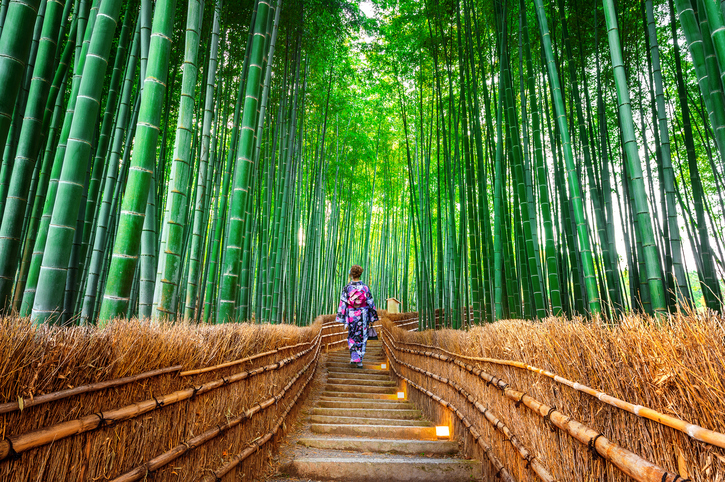If you’re after a dreamlike, fairytale experience, Kyoto is where you want to go to lose yourself in the beautiful Arashiyama bamboo forest. You’ll be amazed by the sheer size of these beautiful slender trees, and you’re guaranteed a unique, unforgettable experience.
The forest is located close to the Hozu River and just a few kilometres from the centre of Kyoto, which was the capital of Japan for more than a thousand years. This is one of the most beautiful and serene places you’ll ever see that will teleport you to a magical land. It’s considered one of the top tourist attractions in this part of Japan and one of the most impressive and photographed places in the land of the rising sun.
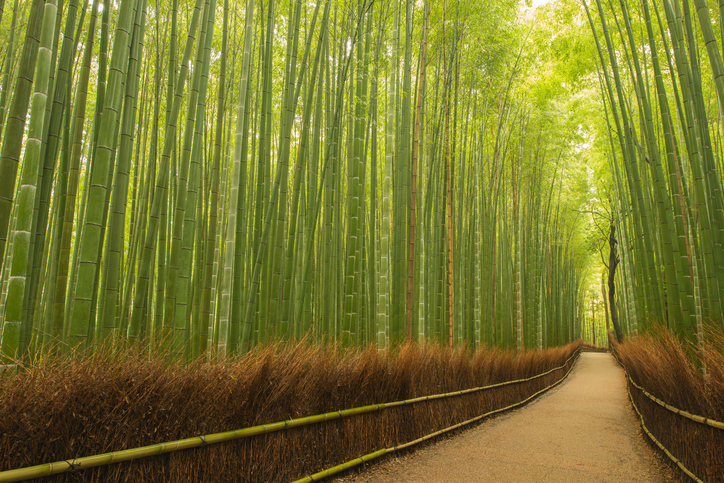
Walking through Arashiyama is like something from a dream. A winding path pierced by the sunlight shining through the tall bamboos that is home to some monkeys and overlooks the river. The sound of the bamboo pillars whispering back and forth in the wind is considered a ‘soundscape’ by the Japanese Ministry of the Environment and one of the top 100 things that should be preserved in Japan.
Arashiyama was a favourite place for the imperial court and nobility to walk during the Heian period (794-1192), which was Japan’s last classical period and considered the peak of Japanese culture, art, poetry and literature. The area still maintains some remnants from that time.
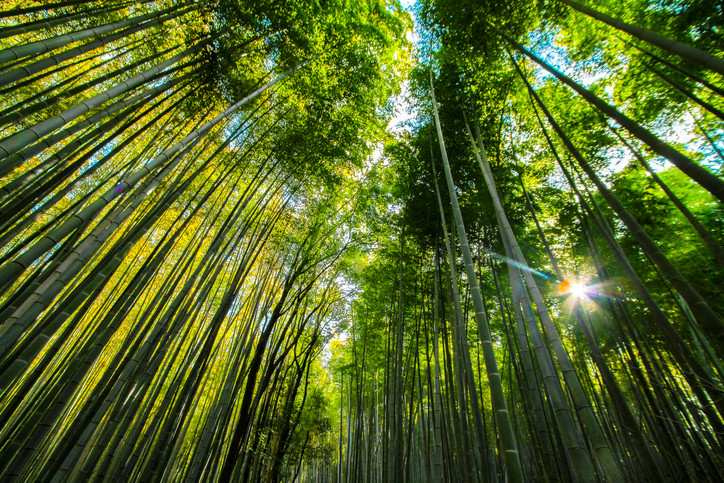
The forest is at its most beautiful during the spring cherry blossom season and again in autumn when the magnificent maple trees cover everything in red tones. We also recommend visiting during the full moon festival and taking one of the traditional boats down the river gorge of rapids.
The forest path runs for about 700m and is a treasure trove of immense beauty with its greenery and robust bamboo pillars stretching up to the sky. Then there’s also the Tenryu-ji Temple next to the forest that was built in the 14th-century and declared a UNESCO World Heritage Site in 1994. The beautiful garden built around the Sōgen Pond in the temple complex was created by Musō Soseki in the 17th-century and is now one of Japan’s designated Special Places of Scenic Beauty.
The Japanese visit the forest to get closer to nature and escape from the stress of city life. The environment is the ideal place to seek harmony among the thousands of bamboos dancing with the breeze that create a magical atmosphere with the creaking sound of the leaves.
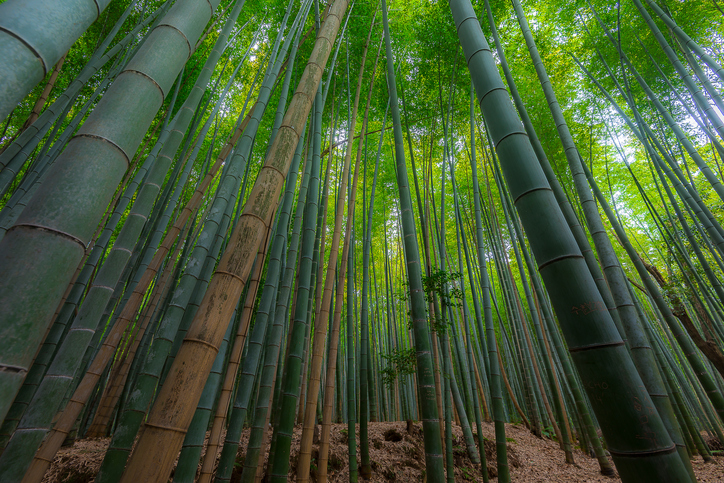
Branches from the bamboo stems that have fallen down are used to make the fences that run along the sides of the path. This is something that was very common on the main islands in Japan.
Bamboo is technically a woody grass that’s native to India, the world’s largest producer, accounting for 65%of the world’s bamboo. It’s a valuable resource that provides almost 40% of the world’s population with the basic needs for food, shelter, clothing, transport, fuel, and medicine, and is often referred to as ‘green gold’ for the rural poor.
Certain species of bamboo can grow up to one metre in a 24-hour period. In the past, people believed that bamboo had magical properties and this was the reason why it grew so fast. However, science has now demonstrated that it’s the plant’s physiological mechanism that makes it grow so quickly.
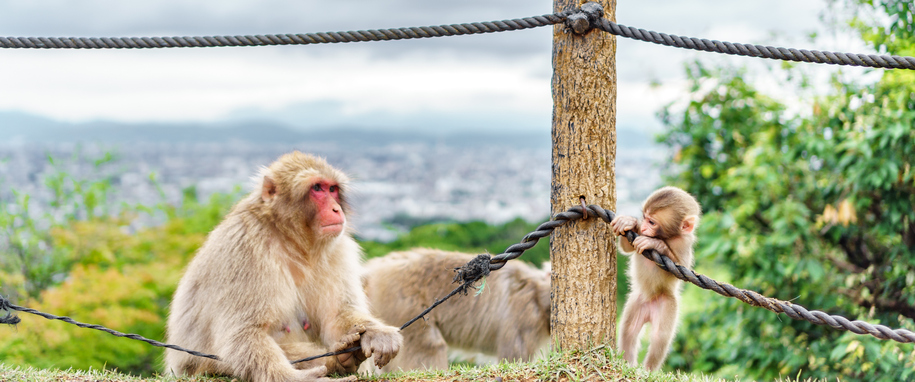
Entrance to the forest is free, and the best, and easiest, way to get there is by bus, which takes about 45 minutes, and you need to get off the bus in Nonomiya. There are also plenty of other tourist attractions in the area like the Togetsukyo Bridge, the Iwatayama Monkey Park, the romantic train station in Sagano, temples, sanctuaries, and gardens that will all help you get an authentic feel for the essence of Japanese culture.



